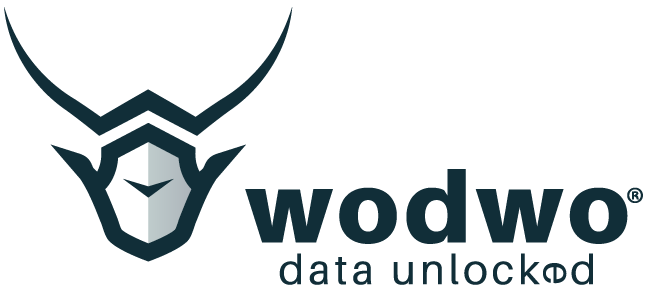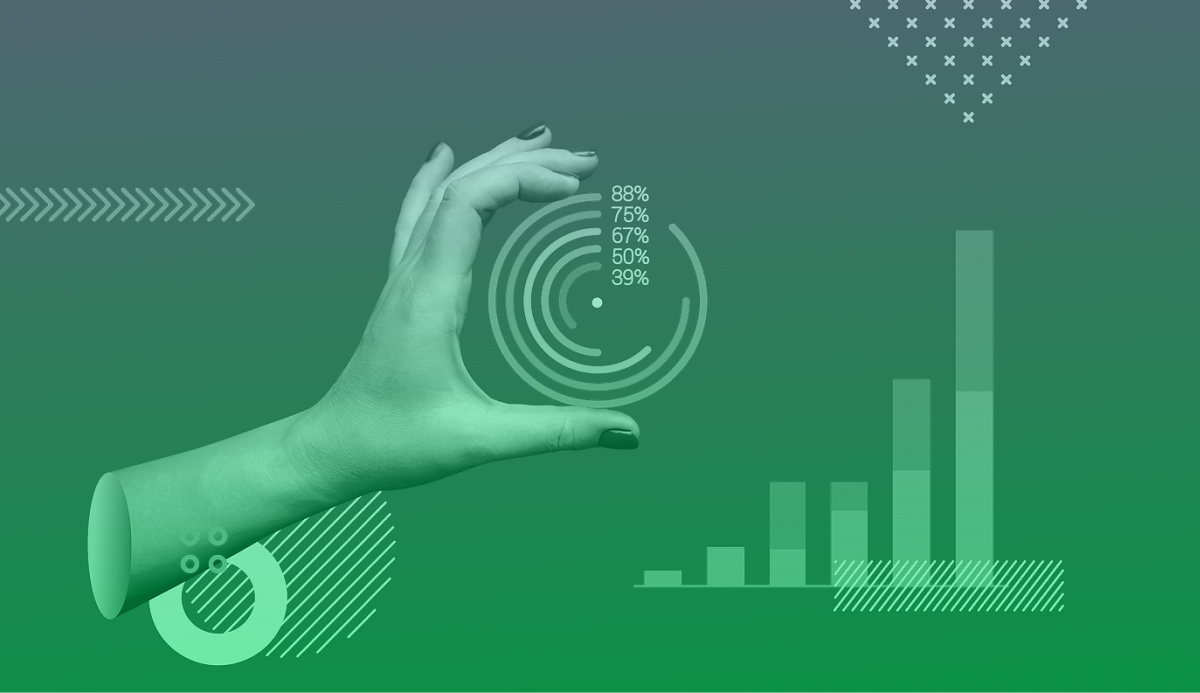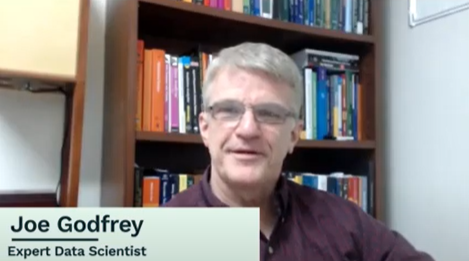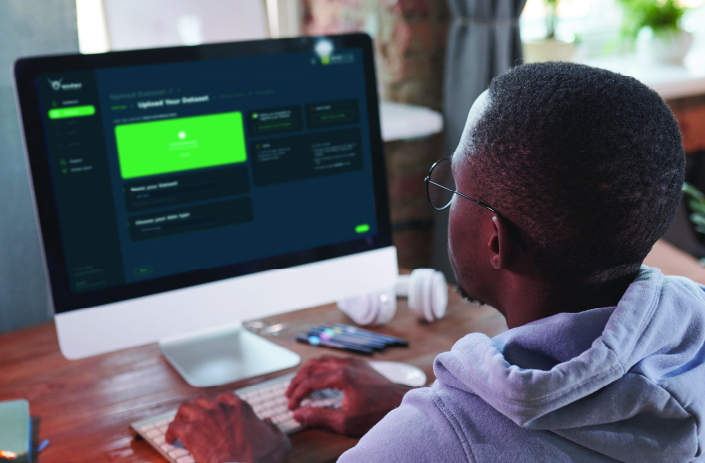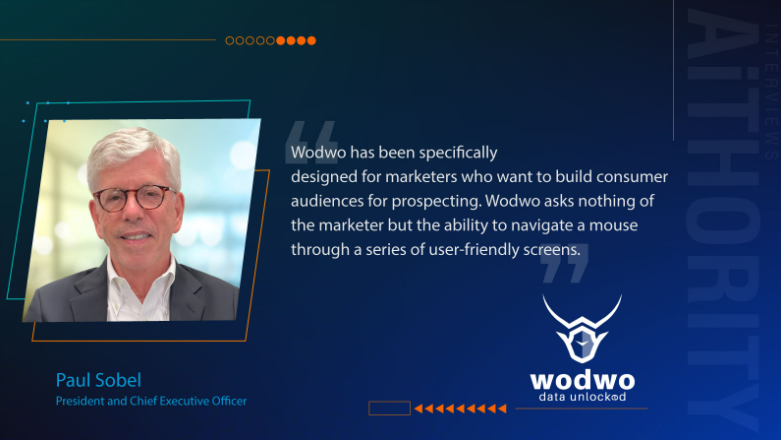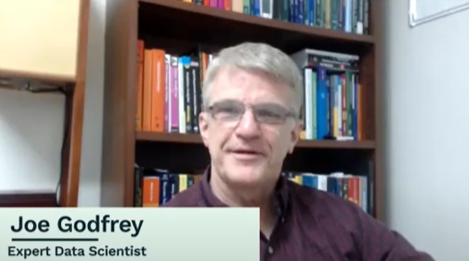
Wodwo Dives into Data Science with Joe Godfrey
Which set of data is more beneficial for marketers, buyer data or browser data?
Joe Godfrey, Chief Data Scientist at Dataline, is an expert in audience modeling. He knows which one is more likely to have an effect on the conversions and sales that drive revenue at businesses like yours.
Do you?
Watch his Wodwo interview and find out.
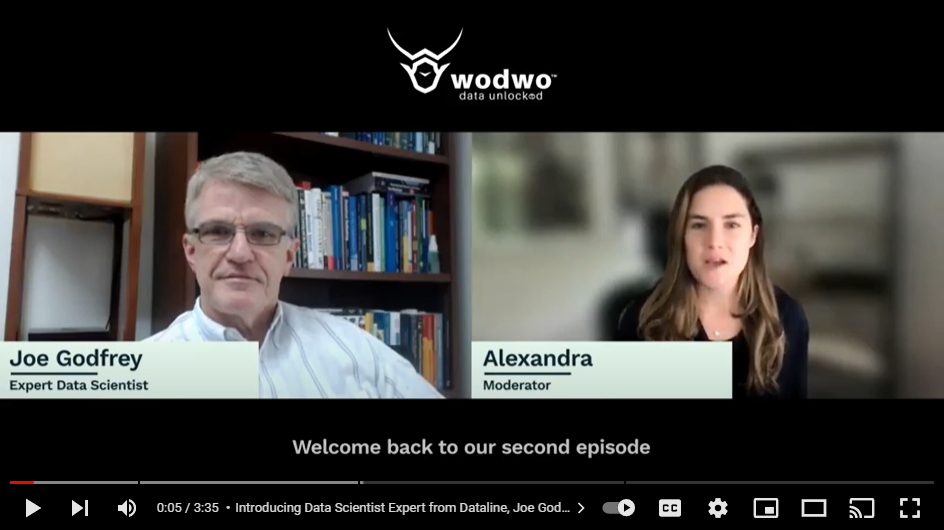
Alexandra
Hello, and welcome to our first episode in a series of data science topics. We'll be rolling out on what was YouTube and LinkedIn channels. My name is Alexandra, and I'll be the moderator. I'm excited to kick us off with data scientist expert from data line. Joe Godfrey. Data Line is what was parent company and has been a premier provider of consumer marketing information for over 20 years. Joe, welcome. Tell us about what you do a data line.
Joe Godfrey
Thank you. Well, I'm the chief data scientist. I've been with the company for over 15 years, and have been involved in building custom customer targeting models and other kinds of analytic products throughout those years.
Alexandra
So Joe, we're here today to talk about why modeling customer modeling to be specific. So why are we looking at this and maybe start with what is it?
Joe Godfrey
Well, I always like to start with the with everyone's immediate experience, particularly in direct marketing folks are used to doing selects, for example, I want my customers have a certain age, a certain agenda, certain kinds of products that they're buying, and it's called a select, and you'll get four or five attributes, and then you just simply select from the database that way, well, that's actually a kind of model, it's a very simple model, where all the attributes have a basic equal weighting, what we do in in the more in the analytics world is we're able to expand that into a much larger profile of the customer and look more in detail more in depth, look at behaviors, not just their characteristics, and then be able to create a model a weighted scheme now where you can take those attributes and weight them. So some are more important than others, you know, age might be more important than gender for a given product. And you can capture that for a straight select can't do that. And so customer modeling is fundamentally about understanding your customer. Who are they using taking advantage of the rich information that's available on those customers to create a model basically, to say, Hey, this is what the customer looks like in full richness of the information available? And that how can I use that information to go and look for more customers or to add or give new products present new products to existing customers and so forth? It just enriches the information space that's available to the market?
Alexandra
And how does it technically work? So lifting up the hood here? How can we get these new target universes?
Joe Godfrey
Well, fundamentally, there's there's two, two dimensions to this. This is your internal data that you have on customers, you may have done surveys and stuff like that, in which case, you can do your own internal market research. But there are a number of companies that have large databases on folks that capture attributes up to 1000s of attributes on on on people, their demographics, but more importantly, their behavior. Because in marketing, we're ultimately interested in behavior, not so much who you are, but what you do and what you care about. So what we do in modeling is we try to get that kind of information on individuals, what are they buying, when they're buying, how much they're spending, what are their interests, and so forth. And then align that with a, and again, I'm coming from my experience, like, we'll call them a client, the client has customers, so our client has customers, we work with our clients to understand their customers, so that they can then prospect to new customers and or upsell, you know, do things with existing customers, etc. So there's the reactivate old customers, and so forth. So the idea, though, is is that we're going to take this large feature space of people, again, their demographics and their behavior, and we're very much focused on that behavior, and then build statistical models that allow us to wait all those attributes, and then identify people in the market that are not necessarily the current folks that you're looking at, then send your marketing messages to.
Alexandra
Okay, so you mentioned there are multiple companies that have 1000s of people are data points to look to look at to consider. So as a marketer, how do I know which company to choose? And of course, we're talking about wide Whoa, but tell me a little bit about how would I make that decision? And how many data points should a company have?
Joe Godfrey
Well, you really want to see hundreds to 1000s of data points that are relevant to you. And it might seem like 1000 is a lot, but actually, it's actually quite thin, you need a lot of attributes to get down to the specificity of your of your customer. Now, if you're in a very niche market, you may be able to go get away with a much smaller database because the attributes in your niche market are relatively few, but there's not going to be a lot of business opportunity for that marketing company. And so You're going to need a marketing company because they need to be in business to that's going to have a larger database so that they can support their business with multiple, multiple different kinds of clients. So you are looking for 1000s of attributes, potentially, although your model, the actual statistical model that you end up working with may only have a few 100, or even less than 100. So it's not like you're necessarily going to use all those attributes. But you need that world, that ocean of attributes in order to find those key attributes that are going to be specific to your customer. So that's one thing you're looking for. The other thing you're looking for, is the sourcing for the for those companies, are they getting people that are active in the marketplace now? So is it a is it a transactional database? Is it focused on consumer behavior, so that you have those behavior characteristics to work with, you're, of course interested in demographic information, particularly age, that's very important gender, and so forth, the basic characteristics, because so many products are geared to those kinds of segments. So you want your database to have that kind of information. So you're interested in the size of the database, its comprehensiveness, how many? How many consumers say there's roughly 240,000,200 50 million consumers, there's more people than that in the country, there's 300 million, but a lot of those are kids or folks that are not active in the marketplace. So it's not necessarily that you want to see 300 million that may be overstating it, right? But somewhere in the 200, to 250 million range is a realistic number for the active consumer market space. So you're looking for that. And then you're looking, so that's sort of the just the population, right, but then you're also looking for that horizontal aspect, all the attributes that you have on these individuals, which will then be sourced from any number of sources, you start with the census, for example, that's a great source for demographic, geographic type information. But then you're also interested in consumer information where you're actually looking at the kinds of transactions and products and services that these individuals are buying. Okay, so going
Alexandra
back to the technology, can we target different audiences simultaneously?
Joe Godfrey
Yes, and there are a number of technologies and approaches to doing this, I think, just to enter into the question is to think of I want to talk about decision trees or classification trees. But to use a metaphor that's probably familiar to most everyone knows they have a family tree, right. And in your family tree, there are all kinds of different individuals, right. And they're on different branches. Well, we do that basically the same technique to capture different market segments, right. So each member of your family is like a market segment, you know, cousin, Jim has one set of interests, sister, Sue has a different set of interests, and so on. And you want to capture that, and they're all on the same tree. So what we do is we build a decision tree, and it starts with, say, your demographic information. So there'll be some older folks and some younger folks, there'll be males and females and so on. And you start creating these groups. And the decision tree then basically aggregates those into a branch. And then you're looking for customers that you have that looked like that group, or actually the decision tree is going to find those groups for you. And then you then the decision tree can then say, Okay, now I'm going to take my decision tree, and I'm going to apply it to the general database. And I'm gonna say, Ah, this branch, and I look for everybody in the database that looks like that, and they get a score. And then there's another branch, and you look for everybody in the database that looks like that, and they get a score. And at the end of the day, there's just one score, but it's come from different branches in the tree, and you're going to send out one marketing campaign. That's the other aspect of this. And your tree will have been designed based on those branches that you're going after. And they'll all be available to you in that single score. And because it's a tree, you don't have to worry about, Oh, they got a score of, you know, 100%, right? Well, which branch is it going to be? It doesn't, it doesn't matter if they if they scored 100% off of this branch, they're the customer. There'll be in that branch, that catalog is a great way to think of this right? You're going to try to sell through a Catalog Catalog has many products, apparel, kitchen wares, furniture and so forth, right? You're just sending out the catalog. Well, the catalog is everybody in a sense, like you but what they're going what's going to track certain groups and the decision tree will have each of those groups in the tree. And anybody that buys furniture, apparel, etc, can get a high score and will then be represented in the in the final output.
Alexandra
Okay, so I know a lot well, is AI powered. Well, how does AI tie into this modeling?
Joe Godfrey
Well, let me first start with with the word AI Artificial Intelligence because that's the that's the word everybody's hearing these days. But there are other similar words and they don't all mean exactly the same thing. I'm kind of a technical person so I worry about the meaning Right. So there's machine learning, and artificial intelligence and so on. So I really like to just think of it in terms of, we're taking advantage of the incredible power in modern computers, to enhance our human capabilities, I don't see it as an alternative to our capabilities. But the enhancement just going back to the mentioned earlier, by doing a simple select as a model, human being can handle, these are all statistics going back almost back to the invention of telephone, people can handle, you know, anywhere from seven to 12, sort of numbers in their head, seven to 12 characteristics, that's fairly typical of what any of us, myself included, can hold in your head. You know, being a data scientist doesn't mean I can handle all these high dimensions and whatnot in my head, no, five 710. After that, I started to get overwhelmed, I deal with 1000s of attributes every day, I can maybe handle 100. Because I do it every day, most folks 1020 And you start to get overwhelmed, it starts to get your eyes blur, right? That's where the machine comes in it does it eyes, its eyes don't get blurry, it can take in all of those dimensions, and do the trade offs just like you or I would do as a data scientist, one of my jobs is to make sure the machine is in a sense being reasonable, that it's doing those kinds of trade offs the same way that you or I would, and we design or choose both the algorithm to reflect that. So different algorithms will work differently, and are differently appropriate depending on the kind of marketing campaign we're doing. So you're looking for a statistical package that will enable one to do that. So you create this model now over 1000s of attributes, and the machine is able to do that. And it's simply amplifying it's like an amplifier on your individual abilities to look at into people now your prospects and see the nuances create those pockets, so that you have a sufficient market to meet your business needs.
Alexandra
So from a cost standpoint, as the market are looking to get more AI into my modeling, or looking at hiring a team of data scientists, how do I make this decision between a platform like WOD? Whoa, and going out and finding my own data scientist?
Joe Godfrey
Well, it's what business are you in? Are you in the business of analytics and building models? Or is it that you just need one or two models to serve your business, there's a difference. If you're going to be in the business of modeling, you need to be building hundreds of models, not one or two. So do you see your business as needing to have all these hundreds of models and models are changing every day and you need analytics and you need people that can evaluate data get for you get data sources, you have to have these data sources that we're talking about for all this behavioral information and information that's not native to your customers. Because that becomes a self fulfilling prophecy, you just look at your customers. And all you can then is sell to your customers and then you, you might be able to find your best customers within your customers and stuff like that, you may be able to do with a handful of data scientists just by working your own data. But if you want to prospect beyond your existing customer base look for new customers, or reactivate old customers, so you don't have current data on them things like that, you're going to need to basically either invest in becoming a data science shop. And then having you know, lots of data scientists that computer infrastructure that's required. The experience, it also takes time I've been doing this 15 years, you know, the first few years were a little rough, you have to learn. And that's going to be true with anyone that you hire, it takes time to come up to speed to develop a sense of how the marketing works and, and stuff you may have learned about statistics in school, how that translates into the real practice of direct marketing. It's there's there's a there's a there's a bit of a learning curve there. So those are all things that I would be considering if I was a company deciding to hey, I'm going to bring data science in house scale is a big issue. How many models am I going to be building? What kind of experience do I need? What kind of investment in infrastructure do I need? If what I need is a handful of models. It's not that if you're going to have a model, like you build it one day, and then it's going to last you for years, you may be rebuilding this model month after month after month, but it's one model. For that I would look to outsource it to a company that is capable of doing these kinds of things that has the data sources that will work with me to to make sure that my model is satisfactory, and so forth.
Alexandra
So how do I know as a marketer or maybe it's the size of my company, if I'm a good candidate to start getting into customer modeling and scale up you
Joe Godfrey
If you if if you need to grow, you're a good candidate, right? You need to find new customers somehow. So you know, you have all your different channels that you work with, okay, you're going to be doing various kinds of advertising? Well, where's the best place to advertise? Well, one of the things you need to then is profile your existing customers, are they online buyers? Are they are they perhaps more easily reached? Like, the old fashioned way direct mail is that television is a telemarketing so on, you need that kind of information, again, and also the customers that you have you got to be careful of is like, well, if I want new kinds of customers, I don't want necessarily be limited to just the profile I see. How can I how can I work to expand that profile. But in fairness, you're going to have to start with the customers you've got, if you want to expand that you're going to have to make certain guesses as to hey, I think I want to go after a younger market. So I'm gonna need to bias my my my messaging towards that and see if I can bring those folks in. And then it's, it's kind of a snowball, you get some of those folks in and you build and grow it out. So you're gonna need to identify what your growth goals are. If you're going to grow the customer base. That means you need to reach folks that you're not currently reaching, the message has to get out to them. A modeling strategy is a way to do that you take your existing customers, and you find out what kind of channels do they listen to, for example, this is just profiling your customer? What? What kind of channels are they listening to? So that you can then say, oh, okay, it looks like online is where most of my customers are coming from or where they where they do most of their their buying, then that's the channel I want to focus on. They may be coming through direct mail, in which case, that's the channel you want to focus on. Or, of course, you may want to portfolio in this day and age of channels. Yeah, this has
Alexandra
been an insightful conversation. Thank you. Before I let you go, my last question is, in summary, why should marketers adopt customer modeling in their strategy?
Joe Godfrey
two fundamental reasons is for scale to grow your customers and your business that isn't growing is dying. So you've got to be focused on growth and acquiring new customers and staying staying with it, if you will. The other is, is to amplify your capabilities, you have insights about your customers, but how can the wealth of data that exists now in the marketplace? How can I take advantage of that data to amplify my understanding of customers to grow my business?
Alexandra
And why should I choose Wardwell?
Joe Godfrey
Well, why? Well, for two reasons. One is that it's backed by one of these large sources of consumer data, the 240 million consumers in the marketplace with recent transactions, rich demographic data, and so forth. So you've got that depth of possibility of understanding your customer. So you've got the data, and it begins with the data, you have to have a solid source of data. The second thing is that why well, the platform is built on our years of experience, building statistical models, and, frankly, being somewhat skeptical of automating the process. So we worked very hard to create a statistical model that tests well, that validates Well, against our own internal custom model. And so that would be one of the reasons I would recommend Wadlow is that it is a state of the art validated against our internal practice, statistical modeling tool and just to be candid data line is using the technology of Wadlow. Now internally as well.
Alexandra
Well, Joe, thank you so much. Thank you all for watching. You can follow this new series on what was YouTube or LinkedIn channels. So head over and subscribe, follow us. We'll see you on the next episode of Wodwo dives into data science with Joe Godfrey Thank you
